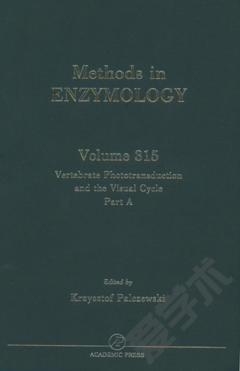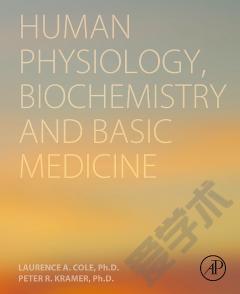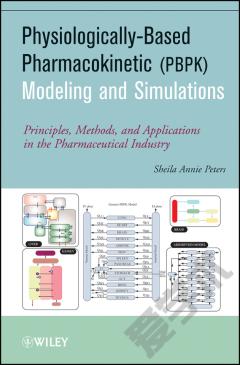Physiologically Based Pharmacokinetic Modeling —— Science and Applications
----- 生理学上基于药物动力学的建模:科学与应用
Preface. Acknowledgments. Contributors. Chapter 1. Introduction: A Historical Perspective of the Development and Applications of PBPK Models. 1. Introduction. 2. A Historical Perspective. 2-1. Responses to Inhaled Compounds. 2-2. Pharmaceutical Applications. 2-3. Occupational and Environmental Applications. 2-4. Digital Computation and PBPK Modeling. 3. Expansion of PBPK Model Applications. 3-1. PBPK Models for Tissue Dosimetry from Secondary Data. 3-2. Biological Mechanisms Underlying PK Behaviors. 3-3. Chemicals as Probes of Biological Processes. 3-4. Risk Assessment Applications. 3-5. PBPK Models as Repository of Mechanistic Data on Distribution and Response. 4. Summary. PART I: PBPK MODELING FOR VOLATILE ORGANIC COMPOUNDS. Chapter 2. Halogenated Alkanes. 1. Introduction. 2. PBPK Model Development for Volatile Organics. 2-1. Model Formulation. 2-2. Model Equations. 2-3. Model Parameterization. 2-4. Model Calculations. 3. Advances in Experimental Methods Demonstrated for Groups of Chemicals. 4. PBPK Models for Halogenated Alkanes. 4-1. Anesthetic Gases. 4-2. Chlorofluorocarbons (CFCs), Refrigerants and Halons. 4-3. Halogenated Alkanes. 5. Summary. Chapter 3. Halogenated Alkenes. 1. Introduction. 2. The Chloroethylenes: Background. 3. Review of PBPK Models. 3-1. Vinyl Chloride (VC). 3-2. Vinyl Fluoride (VF). 3-3. cis-1,2-Dichloroethylene (cDCE) and trans-1,2-Dichloroethylene (tDCE). 3-4. Vinylidene Chloride (VDC). 3-5. Trichloroethylene (TCE). 3-6. Tetrachloroethylene (PERC). 3-7. Allyl Chloride (AC). 3-8. b-Chloroprene (CD). 3-9. Hexachlorobutadiene, HCB. 4. Summary. Chapter 4. Alkene and Aromatic Compounds. 1. Introduction. 2. PK and Pharmacodynamic Properties Important in PBPK Model Development for Aromatic and Alkene Compounds. 2-1. Metabolism and Mode of Action. 2-2. Model Structures. 2-3. PK Differences. 2-4. Extrahepatic Metabolism and Transport of Metabolites. 2-5. GSH Conjugation. 2-6. Endogenous Production. 2-7. Reactivity with DNA and Protein. 2-8. Inhibition of Second Oxidative Steps. 2-9. Variability and PK Differences. 2-10. Subcompartments in PBPK Models. 2-11. "Privileged Access" of Epoxide Hydratase to Epoxide Substrates. 3. Review of Aromatic and Alkene PBPK Models. 3-1. Benzene-A Known Human Carcinogen with an Uncertain Mode of Action. 3-2. Styrene- Early PBPK Models. 3-3. 1,3-Butadiene. 3-4. Isoprene. 3-5. Ethylene, Propylene and their Oxides. 3-6. Naphthalene and Other PAHs. 3-7. Halobenzenes. 3-8. Miscellaneous Related Compounds. 4. Summary. Chapter 5. Reactive Vapors in the Nasal Cavity. Introduction. 1-1. Nasal Effects and Risk Assessment. 1-2. General Models for Nasal Uptake. 1-2-1. Air Phase. 1-2-2. Specific Nasal Regions. 1-2-3. Air Phase Mass Transfer Coefficients. 1-2-4. Interfacial Mass Transfer Coefficient. 1-2-5. Tissue Diffusion. 2. No Air-Phase Models. 2-1. The "Perfused Nose" Model. 2-2. Vinyl Acetate. 3. Creating the Air Phase Compartments. 3-1. Computational Fluid Dynamics. 3-2. Estimating the Air Phase Mass Transfer Coefficient. 3-3. Estimating Air Phase Mass Transfer Coefficients - Acrylic Acid. 4. Other Models for Vapors Affecting Nasal Tissues. 4-1. Vinyl Acetate. 4-2. Ethyl Acrylate and its Metabolite, Acrylic Acid. 4-2. Epichlorohydrin. 5. Methyl Methacrylate. 6. Formaldehyde. 7. Hydrogen Sulfide. 10. Summary. Chapter 6. Alkanes, Oxyhydrocarbons, and Related Compounds. 1. Introduction. 2. Purposes for PBPK Model Development. 3. PBPK Models for Four Classes of Compounds. 3-1. Alkanes. 3-2. Oxyhydrocarbons. 3-3. Alkylbenzenes. 3-4. Siloxanes. 4. Summary. PARK II: PBPK MODEL DEVELOPMENT FOR ENVIRONMENTAL POLLUTANTS. Chapter 7. Pesticides and Persistent Organic Pollutants (POPs). 1. Introduction. 2. Pesticides. 2-1. Chemical Classes of Pesticides. 2-2. Modeling Tissue Distribution. 2-3. Modeling Metabolism. 2.4 Summary of Individual Models. 3. Polychlorinated and Polybrominated Biphenyls, PCBs and PBBs. 3-1. Modeling in Mammals. 3-2. Modeling in Nonmammalian Species. 4. Summary. Chapter 8. Dioxin and Related Compounds. 1. Introduction. 2. Toxicity. 3. Mode of Action. 4. Pharmacokinetics. 4-1. Absorption, Metabolism, and Excretion. 4-2. Distribution. 5. PBPK Models of TCDD. 5-1. PBPK Models of TCDD in Rodents. 5-2. PBPK Models of TCDD in Humans. 6. Summary. Chapter 9. Metals and Inorganic Compounds. 1. Introduction. 2. Physiologically Based Modeling of Metals. 2-1. Arsenic. 2-2. Nickel. 2-3. Lead. 2-4. Chromium. 3. PBPK Models for Non-Metals. 3-1. A PBPK Model for Fluoride, a Bone-Seeking Non-Metal. 3-2. PBPK Models for Other Non-Metals. 4. Compartmental Models for Miscellaneous Inorganic and/or Endogenous Chemicals. 5. Research Needs. 5-1. The Need for Physiologically Based Modeling for Essential Metals. 5-2. Other Research Needs. 6. Summary. PART III: PHARMACEUTICAL APPLICATIONS OF PBPK MODELS. Chapter 10. Drugs. 1. Introduction. 2. Describing the Tissue Distribution of Drugs. 3. Describing Metabolism and Other Clearance Processes of Drugs. 4. Other Issues in Model Development for Drugs. 4-1. Altered Physiological States. 4-2. Drug Stereospecificity. 4-3. Non Steady-State Dynamics. 4-4. Drug Interactions. 4-5. Utilization of In Vitro Data. 5. Future Perspectives. 6. Summary. Chapter 11. Antineoplastic Agents. 1. Introduction. 2. PBPK Models for Antineoplastic Agents. 2-1. Methotrexate. 2-2. cis-Dichlorodiammine-platinum. 2-3. Actinomycin D. 2-4. 2'-Deoxycoformycin (Pentostatin). 2-5. 5-Fluorouracil. 2-6. 2-Amino-1,3,4-thiadiazole. 2-7. 1-beta-D-Arabinofuranosylcytosine. 2-8. Adriamycin. 2-9. Melphalan. 2-10. Topotecan. 2-11. 17-(Allylamino)-17-demethoxygeldanamycin. 3. Summary. PART IV: PBPK MODELING APPROACHES FOR SPECIAL APPLICATIONS. Chapter 12. Perinatal Pharmacokinetics. 1. Introduction. 2. Physiological and Biochemical Changes During Pregnancy. 2-1. Body Weight Changes and Organ Growth. 2-2. Physiological and Biochemical Changes in Pregnant Females. 2-3. Physiological Changes in Fetuses. 2-4. Mechanisms of Chemicals Transfer through Placenta. 2-5. Mechanisms of Chemical Transfer through Breast Milk. 3. Physiological Factors Incorporated into PBPK Models for Perinatal Pharmacokinetics. 3-1. Body Weight in the Mother. 3-2. Organ Volume and Cardiac Output in the Mother. 3-3. Chemical Transfer through the Placenta and Mammary Gland. 4. PBPK Models for Perinatal Transfer. 4-1. Tetracycline. 4-2. Morphine. 4-3. Theophylline. 4-4. Methadone. 4-5. Pethidine. 4-6. Trichloroethylene. 4-7. 5,5'-Dimethyloxazolidine-2,4-dione (DMO). 4-8. Tetrachloroethylene. 4-9. 2-Methoxyethanol and Methoxyacetic Acid. 4-10. Methylmercury (MeHg). 4-11. 2,4-Dichlorophenoxyacetic Acid (2,4-D). 4-12. Methanol. 4-13. Vitamin A Acid. 4-14. Organic Solvents. 4-15. p-Phenylbenzoic Acid (PPBA). 4-16. p,p'-Dichloro-2,2-bis(p-chlorophenyl)ethylene (DDE). 4-17. 2-Ethoxyethanol and Ethoxyacetic Acid. 4-18.Perchlorate. 5. Risk Assessment Dosimetry Models. 6. Summary. Chapter 13. Mixtures. 1. Introduction. 2. PBPK Modeling Of Chemical Mixtures. 2-1. Earlier Days: PBPK Modeling of Binary Mixtures. 2-2. More Recent Endeavors: PBPK Modeling of Higher Order Mixtures. 3. Future Perspectives: Second Generation PBPK/PD modeling. 4. Summary. Chapter 14. Dermal Exposure Models. 1. Introduction. 2. Factors to Consider in Modeling Dermal Absorption. 3. Dermal Absorption Models. 3-1. Membrane Models. 3-2. Compartment Models. 4. Experimental Methods. 5. Summary. Chapter 15. Conclusions and Future Directions. 1. Introduction. 2. A Systems Approach for Pharmacokinetics. 3. Modeling Both Dose and Response. 4. Opportunities for PBPK Modeling in Pharmaceutical Industry. 5. Reaction Network Modeling with Xenobiotics. 6. Systems Biology and Dose-Response. 7. Summary. Index.
{{comment.content}}








 京公网安备 11010802027623号
京公网安备 11010802027623号